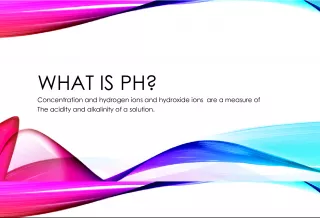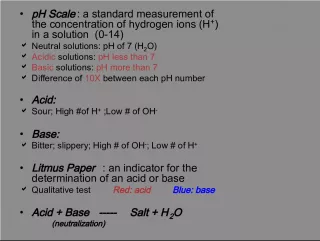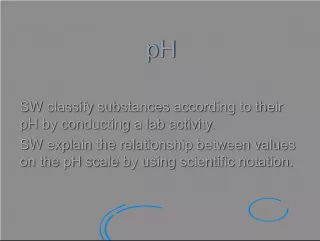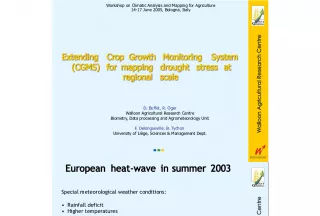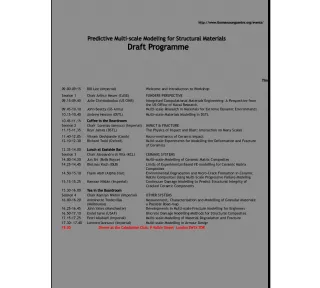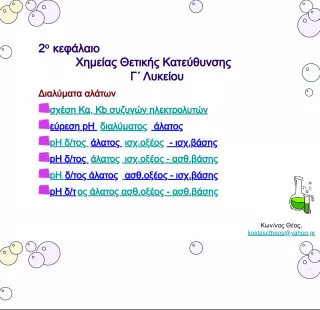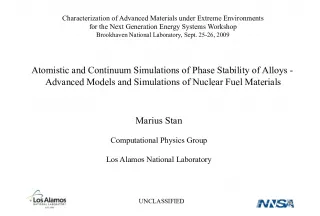The pH Scale: Understanding Acidity & Alkalinity
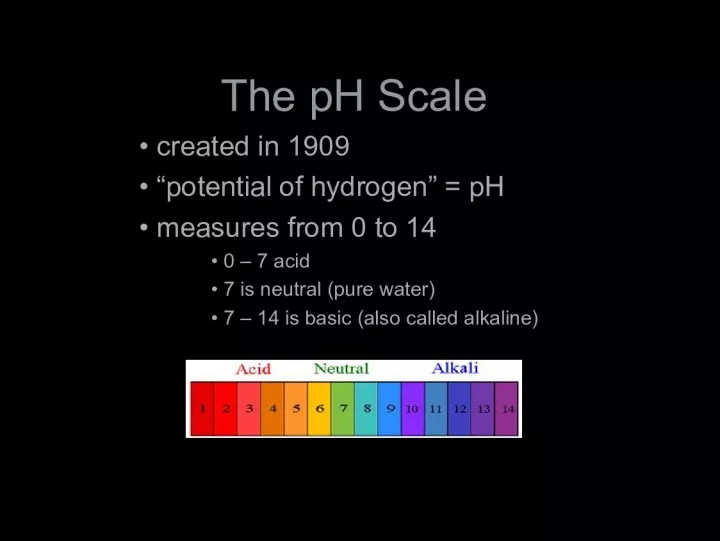

The pH scale, created in 1909 by Danish chemist Søren Sørensen, measures the potential of hydrogen (pH) and ranges from
- Uploaded on | 2 Views
-
 christian
christian
About The pH Scale: Understanding Acidity & Alkalinity
PowerPoint presentation about 'The pH Scale: Understanding Acidity & Alkalinity'. This presentation describes the topic on The pH scale, created in 1909 by Danish chemist Søren Sørensen, measures the potential of hydrogen (pH) and ranges from. The key topics included in this slideshow are . Download this presentation absolutely free.
Presentation Transcript
Slide1The pH Scale• created in 1909 • “potential of hydrogen” = pH • measures from 0 to 14 • 0 – 7 acid • 7 is neutral (pure water) • 7 – 14 is basic (also called alkaline)
Slide2pH is based on how manyhydrogen ions there are
Slide3The pH scale is logarithmic.lemon = 2 apple = 3 Lemons are 10 times more acidic than apples.
Slide42005A chemist from New Zealand invented a new, stable acid with a pH of -18! Called carborane, it is 10 billion billion times stronger than pH of 1! It can be used to increase the octane of gasoline and to make vitamins digestible.
Slide5Indicators = organic compoundsthat change color to indicate pH
Slide6Substances withpH of 12 and above or 2 and below are considered dangerous.
Slide7pH and Lab Safety• Clean up a spilled acid with a base • Clean up a spilled base with an acid • Neutralization = chemical reaction between an acid and a base that produces a solution of salt and water with a pH of 7
Slide9pH and Life• Stomach Acid = pH ~1 • Urine = pH 6.0 • Sea Water = pH 8.4 • Fresh Water = pH 6 – 8 • Blood = 7.4 If pH changes by as little as 0.4, serious illness and death may result. What do you call it when the stomach acid harms the stomach lining?
Slide10pH and the stomachIn 2005, a Nobel Prize in Medicine was awarded to the discoverers of the real cause of ulcers, a bacteria called helicobacter pylori. Dr. Marshall, from Australia, had previously been ridiculed for his theory of ulcers and treating them with antibiotics like any infection. pH = ~1 pH = 10.5
Slide12pH and the Movies
Slide13Naturally Acidic Environments
Slide14Naturally Alkaline EnvironmentsSoda Lake, Wyoming Mojave Desert, Soda Desert
Slide15What is acid rain? What is acid rain? Precipitation with higher than normal amounts of nitric and sulfuric acids.
Slide16What causes acid rain?• volcanoes and decaying vegetation put acid rain causing materials into the atmosphere • burning of fossil fuels puts sulfur dioxide (SO 2 ) and nitrogen oxides (NOx) into the atmosphere • these substances combine with water and oxygen in the atmosphere to produce acid rain
Slide20In the United States, about 2/3 of all SO2 and 1/4 of all NOx come from electric power plants.
Slide21Where does acid rain go?• prevailing winds blow the material across state and national borders, sometimes over hundreds of miles • In NJ, prevailing westerly winds bring acid rain from the midwest where there are a lot of electric generating plants.
Slide22As of 2000, the most acidic rain falling in theU.S. has a pH of about 4.3!
Slide23What are the effects of acid rain?• acidification of lakes and streams • damage to trees • damage to soils • speeds up the decay of building materials and paints, including irreplaceable buildings, statues, and sculptures • reduced visibility from haze and smog • harm public health
Slide29How do we measure acid rain?• Pure water has a pH of 7.0. • Normal rain is slightly acidic, pH 5.6, because carbon dioxide (CO 2 ) dissolves into it forming weak carbonic acid • Monitoring stations record data about precipitation, including its pH
Slide33Hydrangea – pink in basic soil
Slide34Hydrangea – blue in acidic soil
Slide35What should we do about acidrain? • Clean up smokestacks and exhaust pipes • Use alternative energy sources • Restore a damaged environment
Slide36Air Quality in NJNJDEP Bureau of Air Monitoring
